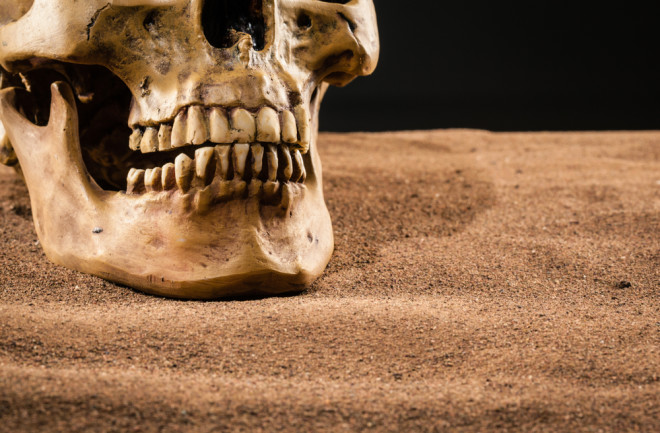Dental problems have tormented humans for ages, but the recent discovery and analysis of two 4,000-year-old teeth reveal how the bacteria populating our mouths have changed over time. The teeth, found in a limestone cave in Killuragh, County Limerick, Ireland, along with other skeletal remains, have helped researchers piece together a timeline of oral health. Their findings have been published in a new paper released in Molecular Biology and Evolution.
Although fossilized teeth and their DNA are often well-preserved and highly valued by archaeologists, it’s rare to come across full genomes from oral bacteria in teeth predating the Medieval era. As a result, it has been difficult to discern the extent of oral health throughout history, including the dietary changes that played important roles. However, the two teeth from the limestone cave — both belonging to the same Bronze Age man — have now supplied researchers with a deeper understanding of ancient oral microbiomes.
A Precursor to Cavities
The sampled teeth didn’t exhibit signs of caries (another term for tooth decay), but one had an ample amount of S. mutans, a type of bacteria that is considered the main cause of cavities. This stood out to the researchers because S. mutans is rarely observed in the ancient genomic record. Its absence could be explained by its tendency to produce acid that not only causes tooth decay but also breaks down DNA and prevents plaque from mineralizing.
“We were very surprised to see such a large abundance of mutans in this 4,000-year-old tooth,” says Lara Cassidy, an assistant professor at Trinity College Dublin and senior author of the study. “It is a remarkably rare find and suggests this man was at high risk of developing cavities right before his death.”
Researchers think the cave's cool, dry, and alkaline conditions may have preserved the S. mutans DNA so well. They also believe, though, that the substantial presence of S. mutans could signify an instance of dysbiosis or an imbalance in bacterial composition; while S. mutans DNA was abundant in the tooth sample, other streptococcal species were not present, meaning S. mutans had outcompeted them.
Read More: What Ancient Teeth In Cave Can Tell Us About The Bronze Age Collapse
Comparing the Oral Bacteria of Past and Present
The study seems to reinforce the idea that the microbiomes of our ancient ancestors were more diverse than our own microbiomes. This is supported by the researchers’ reconstruction of two genomes of T. forsythia — another bacterial species involved in gum disease — that were found to vastly differ from one another.
“These strains from a single ancient mouth were more genetically different from one another than any pair of modern strains in our dataset, despite these modern samples deriving from Europe, Japan, and the USA,” says Iseult Jackson, a Ph.D. candidate and first author of the study. “This is interesting because a loss of biodiversity can have negative impacts on the oral environment and human health.”
According to the researchers, the reconstructed genomes of both T. forsythia and S. mutans reflect considerable changes in the oral microenvironment over the last 750 years. Contrasting with the diversity of T. forsythia strains in ancient times, just one lineage of the bacteria has prevailed in recent centuries by attaining a genetic advantage over other strains.
Read More: Diving Deep into the Mouth's Microbial Dark Matter
How Sugar Reshaped Our Oral Microbiome
S. mutans also underwent lineage expansion and changes in gene content that occurred when sugar became a popular mainstay of the human diet after 1500 A.D., the beginning of the early modern period. Today, populations of S. mutans are more diverse than T. forsythia.
“S. mutans is very adept at swapping genetic material across strains,” says Cassidy. “This allows an advantageous innovation to be spread across mutans lineages, rather than one lineage becoming dominant and replacing all others.”
The changes in both bacteria over time ultimately present a clearer vision of oral health from the past to the present. It seems that our love of sugar, in large part, has driven the transformation of our mouths' microbiomes.
Read More: What Were Stone Age Bacteria Like? We Now Have the First Clues
Article Sources:
Our writers at Discovermagazine.com use peer-reviewed studies and high-quality sources for our articles, and our editors review them for accuracy and trustworthiness. Review the sources used below for this article:
Lara Cassidy. Assistant professor at Trinity College Dublin, senior study author
EMBO reports. The changing hypothesis of the gut
Iseult Jackson. Ph.D. candidate, first study author

